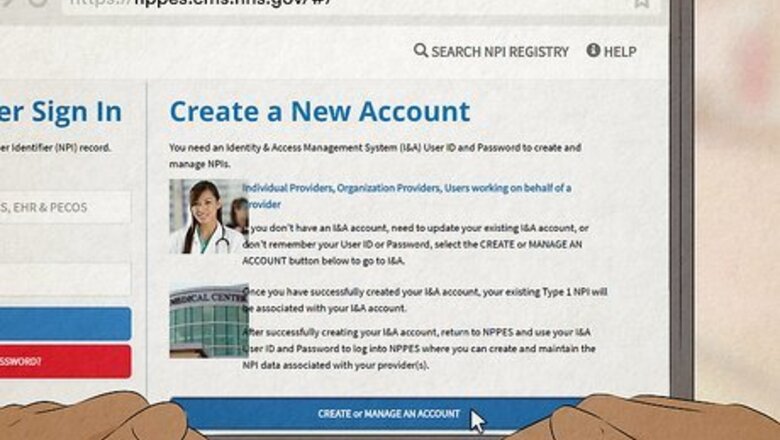
views
X
Research source
If you apply online, you can get your number in as few as 10 days.[2]
X
Research source
Here, we'll walk you through the quickest ways to apply for your NPI number.
Getting an NPI Number Online
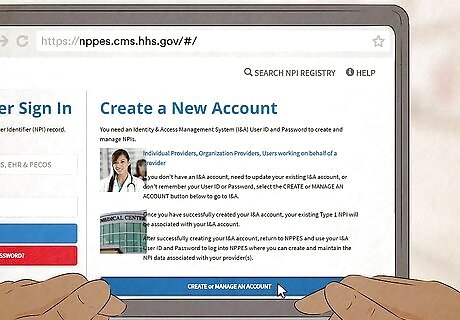
Create a new account in the Identity & Access Management System. NPI numbers are issued and managed by the National Plan and Provider Enumeration System (NPPES). Go to the NPPES website (https://nppes.cms.hhs.gov/#/) and click the button to create a new account. It does take a few minutes to set up a new account. You'll need to choose security questions and answers as well as set up multi-factor authentication to verify your identity.
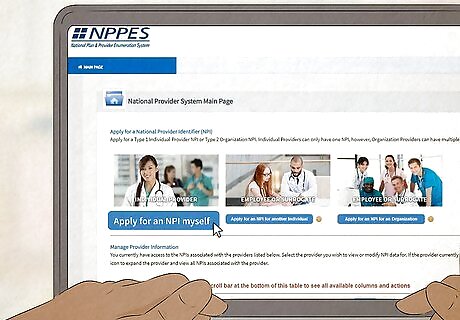
Return to the NPPES homepage to log in to your account. Use your newly created username and password to log in to your account, then enter the code sent to you either through text or email. Then, click the button that says "Apply for an NPI for myself" to start your application.
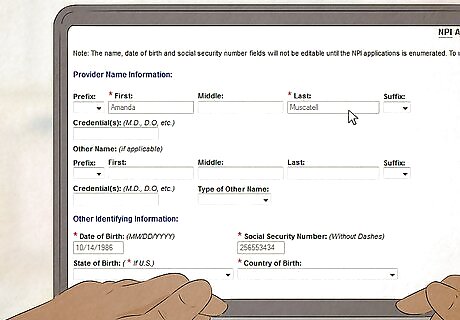
Complete your provider profile. The first part of the application requires basic identity information, including your name, address, credentials, date of birth, and taxpayer identification number. If you're applying as an individual, your taxpayer identification number will be your Social Security number. If you don't have a Social Security number, you can't complete your application online. If you're applying for an NPI for your practice, you'll use the EIN for the practice. Only choose this type if you organized your practice as an LLC, partnership, or corporation—if you're a sole practitioner, you still register as an individual.
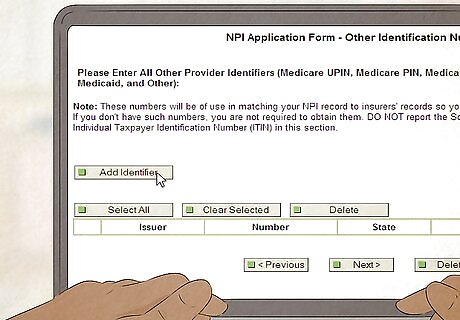
Add "endpoints" for exchanging healthcare information if you want. This part of the application is optional, but it can be convenient. Endpoints allow you to securely share healthcare information with other healthcare providers. If you're routinely associated with particular hospitals, specialists, or other medical professionals, you can list them here. You can always update your NPI application if you want to add or change endpoints later on.

Enter "101Y00000X" as your primary taxonomy code. This is the general taxonomy code for "counselor." There are other codes you can add under the same NPI number if you have a specialty. For example, if you work in a substance abuse treatment center, you might add "101YA0400X," which indicates that you're a counselor for addiction or substance use disorder. Go to https://taxonomy.nucc.org/ to look up different codes.
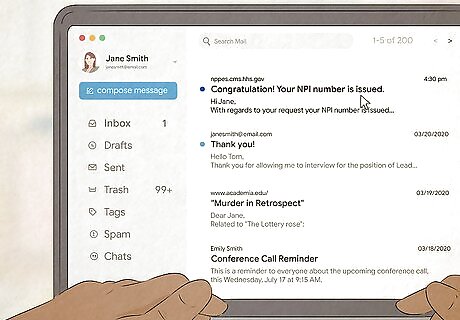
Get an email with your NPI number in about 10 days. Provided your application is filled out correctly and has all the required information, the NPPES will issue your NPI and send a notice to the email address you provided. You can also find your number by logging into your account.
Applying for an NPI Number by Mail

Apply online if you can do so for faster processing. The Department of Health and Human Services (HHS) recommends online applications because they can be processed more quickly and easily. However, you need a Social Security number (SSN) to apply online. If you don't have an SSN, you have to apply by mail using the paper form. If you're a visiting professional from another country, for example, you might not have an SSN yet. Although you can apply for one, you usually need to apply for an NPI before your SSN is issued.
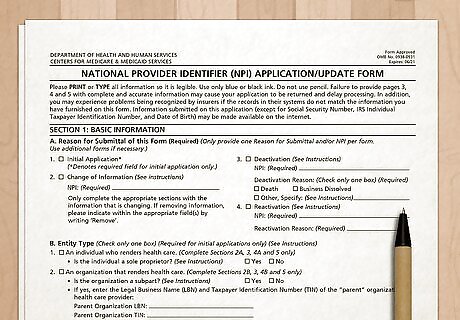
Download the paper application form. The paper application form is available at https://www.cms.gov/Medicare/CMS-Forms/CMS-Forms/downloads/CMS10114.pdf. Read the accompanying instructions carefully so you understand what information you need to fill out the form. You can also request a hard copy of the application by calling 800-465-3203 or emailing [email protected].
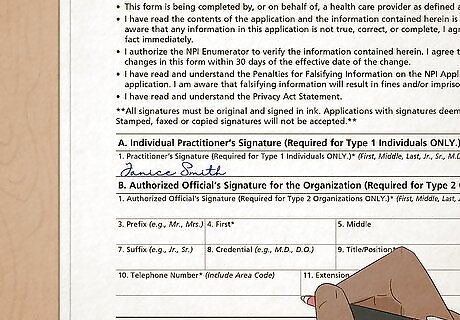
Fill out and sign your application. The application requires you to provide basic identity information for yourself, as well as details about your credentials and your practice. Type your answers or write them clearly using a black pen. Then, carefully read and sign the certification statement. For the taxonomy code, use "101Y00000X," the code for counselor, as your primary code. You can add other codes if they're applicable to your practice. Look up codes at https://taxonomy.nucc.org/.
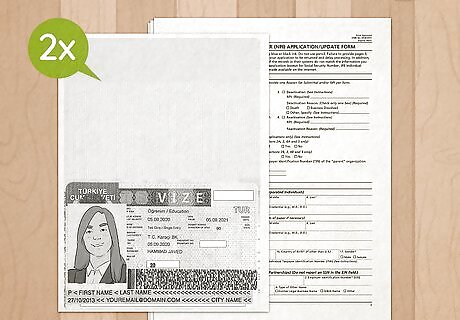
Include copies of 2 forms of identification if you don't have an SSN. Make copies of the identity page of your passport, your birth certificate, or a US government-issued photo ID to accompany your application. Write a brief letter explaining why you don't have an SSN. For example, you might write "I don't have a US Social Security number because I haven't met the immigration requirements to get one. I'll update my NPI when I've received my Social Security number." Be sure to include an English translation of your documents if they're in another language.
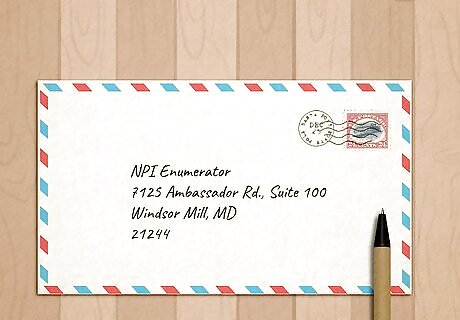
Mail your application to the NPI Enumerator. Mail your form and copies of identification, if you have those, to the address listed at the bottom of the application. It'll take at least 10 days from the date the NPPES receives your application to assign you an NPI. For paper applications, use the following address:NPI Enumerator7125 Ambassador Rd., Suite 100Windsor Mill, MD21244 Paper applications do take longer to process than electronic applications, so be patient. If you included an email address, the enumerator will send you an email with your NPI, which will mean you'll get it a little quicker than if they have to mail it to you.
Using the Electronic File Interchange (EFI) to Get an NPI

Ask your employer if they'll apply for an NPI on your behalf. If you've recently started working for a hospital, private firm, or other organization and don't already have an individual NPI number, your employer will likely apply for one on your behalf. Ask them about this before you apply for an NPI for yourself. Even if your employer files the application for your NPI, it's still yours and yours alone. If you move to a different employer, you'll take your NPI with you. The EFI process doesn't work for sole proprietors who might have some taxonomy codes that apply to group practice rather than individuals.

Provide license information to the EFI Organization (EFIO). The EFIO needs information about you and your practice so it can submit your application. Often your employer will provide this information, although you may be responsible for providing it directly yourself. Most EFIOs will have a form for you (or your employer) to fill out that provides all the information necessary to complete your application.

Validate the information listed on your application. Before your application is submitted, look over the information the EFIO plans to submit and make sure everything is correct. If you see any mistakes, let the EFIO know as soon as possible so they can be corrected.

Get notification of your NPI from the EFIO or your employer. EFIOs often submit thousands of applications at once, which the NPPES reviews for errors. Once all the records are properly validated, the NPPES issues NPIs to the EFIO for each application submitted. If your employer requested the NPI on your behalf, the number will typically be given to your employer, who will then pass it on to you.




















Comments
0 comment